12 Basic Principles of Building Planning
Whether it is “general housing”, “Industrial housing” or any other type of housing, certain general principles of planning should be carefully considered and checked before finalization of the plan. In this article we are going to discuss the 12 basic principles of building planning:

- Aspect
- Prospect
- Grouping
- Furniture Required
- Roominess
- Circulation
- Flexibility
- Privacy
- Economy
- Elegance
- Sanitation
- Practical Consideration
1. Aspect
Aspect means the peculiarity of the arrangement of doors and windows in the outer walls of a building, particularly of residential buildings, which allow the occupants to experience the natural gifts such as sunshine, breeze, scenery, etc.
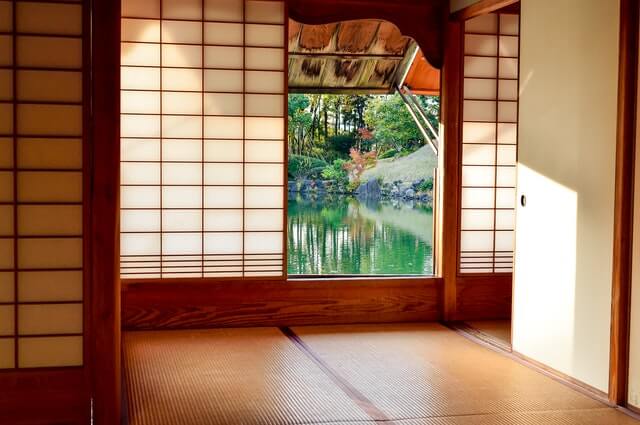
This aspect creates a pleasant and hygienic atmosphere in the building. It is necessary that air movement should occur in the building at the level of occupancies and use.
As per the rule, every habitable room shall have opening directly to the external air or into an open verandah, excluding doors inclusive of frames shall not be less than:
( a ) One-tenth of the floor area for dry hot climate ;
( b ) One-sixth of the floor area for wet hot climate ;
( c ) One-eighth of the floor area for intermediate climate ;
( d ) One-twelfth of the floor area for cold climate, and cross ventilation using windows shall be effected either by means of windows in opposite walls or if this is not possible or advisable, then at least in the adjoining walls.
Below we have given some ideas for different rooms and their aspect
i. The living room should have southern or southeast aspect.
ii. All the bedrooms should have either the west or south-west aspect, This is because the air required in summer would blow from this direction.
iii. The kitchen should have an eastern aspect so as to allow the sun to refresh and purifies the air in the kitchen with its first ray. The kitchen would remain cool during the later part of the day.
iv. The storerooms should have a northern aspect as there will be no sun from the north side.
v. The study rooms, classrooms, etc., should have north aspect as light received from both will be diffused and evenly distributed.
Read More: Orientation of Buildings
2. Prospects
Prospect is the view as seen while looking through the windows and doors from a certain room of the house.
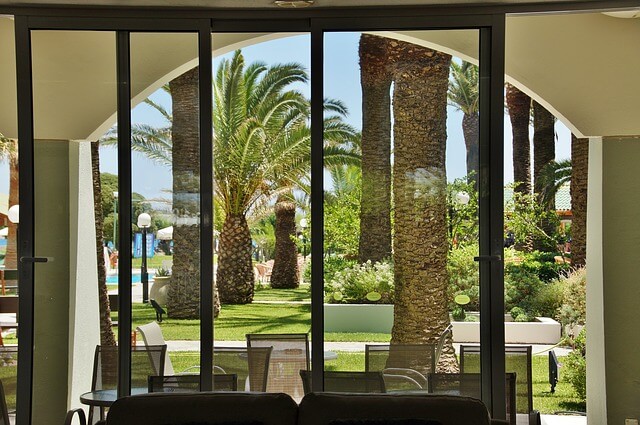
Everyone expects that the scene around their house will be beautiful and pleasant to look at. However, it is not always possible that the views of every side from the house will be beautiful and pleasant.
Thus, the doors and windows should be located in such a way that occupants can enjoy the outside views while looking through those doors and windows, and toward unpleasant views, the opening should not be provided.
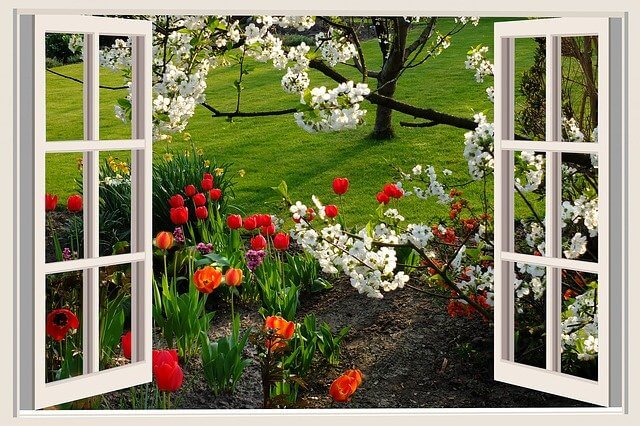
But doing so the quality of aspect may hamper. In such circumstances experienced planners may minimize the conflict between aspect and prospect i.e., an opening in external walls shall be provided for a cheerful atmosphere in the room but pleasant views remain concealed.
3. Grouping
Grouping is the arrangement of various rooms regarding their function. The relationships of the spaces should be such that there is a feeling of invitation and transition, rather than a feeling of abrupt change. For the residential building, planning should be grouped as (a) Living area; (b) Sleeping area; (c) Service area; and (d) Circulation area.
(a) Living Area
The living area is the area for general use and should be next to the front Varanda and near the entrance.
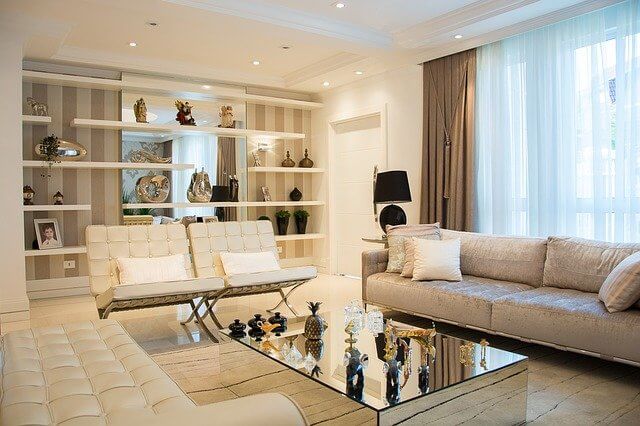
The drawing room or guest room should not provide direct passage to the bedrooms but should be adjacent to the dining room. At the same time, the kitchen should be kept away from the living room to avoid smoke and smells.
The living room should be sufficiently ventilated and spacious in order to accommodate furniture. It should get an attractive view of the surroundings and garden etc.
In extreme cases, the living room may be located at the center, and accesses or approaches to various units and apartments may radiate from it.
(b) Sleeping Area
This is the area of bedrooms and should be located so as to guard privacy. The site should be sufficient to accommodate beds, dressing tables, etc. An attached toilet to the bedroom should be preferred.
c) Service Area
This includes the area of the kitchen, dining rooms, bathrooms, and toilet.
The dining room should be close to the kitchen. This will make it much easier to carry food.
The kitchen room should be avoided near the living room, bedroom, and study room to avoid smoke and smells.
d) Circulation Area
This is an area for passage, lobby, corridor, etc., It should be minimum but well-ventilated and lighted.
e) Other Area
Other areas such as the study room, Puja room, etc., may be located near the living room or bedroom.
4. Furniture Required
Furniture silently tells us what this room is made for because the requirements of furniture for different rooms are also different.
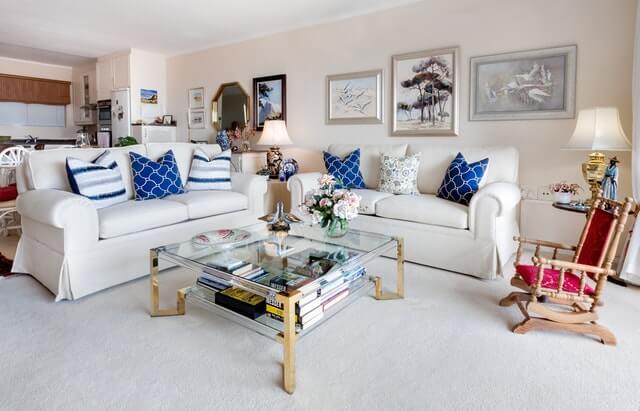
During planning the location of furniture and other utility articles, they should be so arranged in the respective rooms in such a way as to give maximum area for movements, convenience for operating door and window shutters, and a comfortable breeze to bed.
It is better to create a sketch plan showing furniture positions so that it can be made sure that doors, windows, and circulation space do not preclude the placing of a sufficient number of pieces. In such plans, positions of beds, heavy furniture pieces such as sofas, big furniture, chest of drawers, etc. should be shown.
For public buildings like – schools, theatres, etc. furniture requirement plan is essential to determine the strength of accommodation.
Read More: Best Online Furniture Stores.
5. Roominess
Roominess is the accomplishment of the economy of space. Planning should be such that maximum benefit can be obtained from the minimum required for the functions expected to be available from the space.
For utility, a rectangular room is better than a square room of the same floor area. Accordingly, the length and breadth ratio should be 1.2: 1 to 1.5: 1. If the ratio is one and half (1: 0.5) then again a bad effect is created. A room having its length twice the width is objectionable as it creates a look like a tunnel.
Skill is essentially required for making use of available accommodation by proper arrangement of the rooms, by locating the doors, windows, and passages in such a way that the utility, livability, and privacy are not adversely affected.
6. Circulation
For movement and access to various rooms, a certain amount of free space is needed, which is known as circulation or free space area. This includes passages, corridors, porches, halls, lobbies, staircases, etc. The circulation should be designed in such a way that this will preserve every room’s privacy and not disturb any householder.
7. Flexibility
The term flexibility means a provision in the original plan for its future extension or change in the inside planning of a room, bathroom, w.c. etc., by changing the position i.e., flexibility can be availed of. Future extension or development in public buildings like schools, hospitals, hostels, etc., becomes necessary stage by stage. So, the present planning for such cases should be flexible to provide the future demand.
8. Privacy
Privacy is the most important part in case of building planning. It has a very significant role, particularly in residential buildings. Unless optimum privacy is secured, all the principles of planning of a building are bound to fail.

The privacy of a building is two types
i. External privacy
External privacy of the whole building regarding the surrounding buildings and roads can be guarded by placing window sills, which can cut the vision of outsiders to the bed in the bedroom. A businessman would like to have for his office necessary privacy and at the same time, he would like to have his concern easily spotted.
ii. Internal Privacy
In modern planning, it is often seen that a big central hall is provided to serve as drawing-cum-dining room. Bedrooms, kitchens, water closets, and bathrooms are arranged along two long sides of the drawing-cum-dining room. Such planning of rooms often can’t satisfy the factor of privacy. Proper positioning of rooms, lobbies or screens can grant necessary internal privacy.
9. Economy
The economy is a vital factor in building planning. While planning, the following points should be carefully considered
(a) The square shape of the building is the most economical, since it provides the maximum amount of floor area, with the least amount of wall area.
(b) Cost of bigger rooms is less. For the same floor area, a number of smaller rooms will incur more cost than a bigger room.
(c) Minimum offsets should be provided to satisfy architectural and other practical considerations because the cost of construction for corner walls is comparatively more than for straight walls.
(d) The economy in construction can also be affected by using as many common walls as possible by arranging two rooms side by side.
(e) Detached building costs more in comparison to that of a semi-detached one.
(f) Planning on a modular basis:- Dimensions of all rooms, door and window openings, the wall between two openings, etc. should be multiples of available brick sizes.
(g) Sizes of rooms:- Considering the positions of doors, windows, and furniture, a greater economy can be achieved by reducing the sizes of rooms without affecting the crowding. Read Also: Standard Room Sizes.
(h) Free space area:- To lower the cost of a building such common paces should be reduced to the minimum.
(i) Reducing structural cost:- The foundation and other construction should not be designed to be unnecessarily strong by assuming a large volume of loads and low value for the working stresses.
(j) Economy in using building materials:- As much as possible local materials should be used in the construction.
10. Elegance
In simple words, elegance means the external appearance of a building produced by elevation. It depends upon several factors like – the proportion of width and height, the position of doors and windows, and also the choice of materials. During the planning of a building architectural design and composition should be visualized to create an elegant structure.
11. Sanitation
Sanitation term embodies not only sanitary convenience such as w.c., urinals, bathroom, sinks, etc. but also lighting and ventilation of the building as a whole. Sanitation means the environment of the house and includes;
a) Lighting
b) Ventilation
c) Cleanliness
d) Plumbing services
The Health and happiness of the dwellers depend upon the sanitation of the house and such consideration plays an important role in building planning.
Lighting and ventilation may be done naturally or artificially. Good ventilation is an important factor conducive to comfort in buildings. Ventilation is the change of air in the room. Air conditioning is nothing but forced or induced ventilation under controlled humidity and temperature conditions.
12. Practical Consideration
In addition to all of the basic principles of planning discussed, the following practical points should also be taken into account.
Future Extention: Future extension is a very important point, and that should consider before creating any planning. The planning should be done in such a way that future extension should be possible without affecting the existing building.
Comfort: The first and last priority is always to provide comfort to the occupants. The plan should be such that it does not affect the comfort of the occupants.
Size of the Room: The room sizes should be kept as large as possible. A large room can be shortened by providing partition walls, but a small room cannot be simply expanded.
Elevation: As far as possible the elevation of the building should be made simple but attractive.
Stability: The building should be strong enough to withstand the adverse effects of rain, wind, storm, snow, etc.